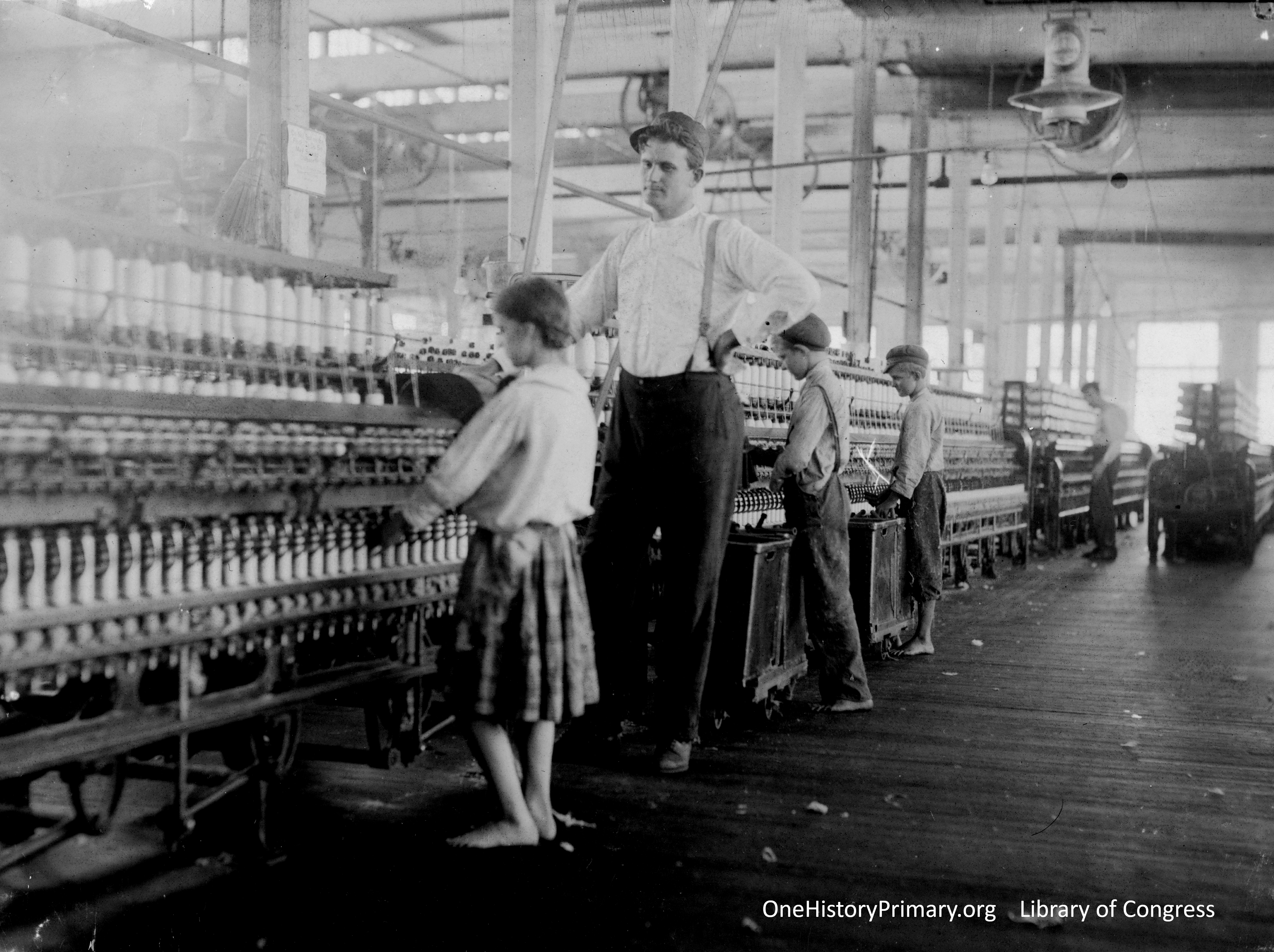
This is a documentary photography. In the early years of the 20th century, the National Child Labor Committee commissioned photographer Lewis Hine to go out across the country and photograph children who were too young to be working legally or were working in dangerous and unhealthy conditions. The caption above is from Hine’s notes. It refers to a mill where cloth was made. The spinning machines and looms moved very fast, and the workers reached their hands into the machines. The children worked long days, often ten or twelve hours, and breathed in lint that could damage their lungs.
The photo is high enough resolution that, if you have access to a Smart Board, you can zoom in on details. However, you can also print it out on 8 1/2 x 11 or larger paper. To access the high resolution image for printing or projection, right click on the image. Click “View Image” or “Open image in new tab”). To print, click “print.” In the print preview, click “Page Setup.” Choose “Landscape” for the orientation. Set all headers and footers to “blank.” Set margins to “0.” Then print.
Look to the Seven Strategies for help in generating questions for your classroom. In this case, you will probably want to show or tell students the caption and other background information before you begin questioning. Possible questions include these:
- Strategy 2: What was the purpose of this photograph? (To show how bad child labor was)
- Strategy 3: What was the bias of the photographer? (His bias was that child labor was bad.)
- Strategy 4: Where was this photograph taken? What were the children doing? How old do you think the children were? Does the work they were doing seem safe?
- Strategy 5: Where do you think you could find more information about working in the mills?
- Strategy 6: How do you think you would feel if you had to work in a mill instead of going to school?
Extension Activity
Assign students the task of finding more photographs by Lewis Hine of child labor.